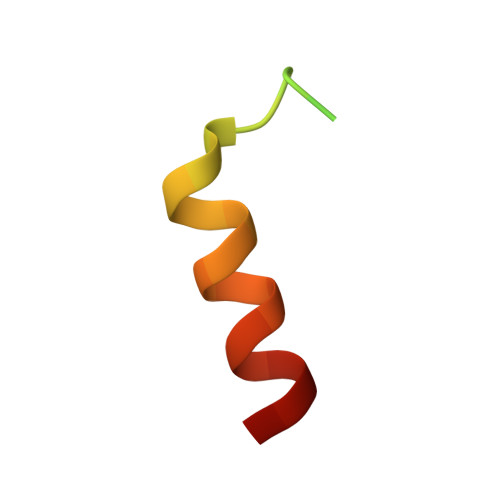Optimization of the Solubility of HIV-1-Neutralizing Antibody 10E8 through Somatic Variation and Structure-Based Design.
Kwon, Y.D., Georgiev, I.S., Ofek, G., Zhang, B., Asokan, M., Bailer, R.T., Bao, A., Caruso, W., Chen, X., Choe, M., Druz, A., Ko, S.Y., Louder, M.K., McKee, K., O'Dell, S., Pegu, A., Rudicell, R.S., Shi, W., Wang, K., Yang, Y., Alger, M., Bender, M.F., Carlton, K., Cooper, J.W., Blinn, J., Eudailey, J., Lloyd, K., Parks, R., Alam, S.M., Haynes, B.F., Padte, N.N., Yu, J., Ho, D.D., Huang, J., Connors, M., Schwartz, R.M., Mascola, J.R., Kwong, P.D.(2016) J Virol 90: 5899-5914
- PubMed: 27053554
- DOI: https://doi.org/10.1128/JVI.03246-15
- Primary Citation of Related Structures:
5IQ7, 5IQ9 - PubMed Abstract:
Extraordinary antibodies capable of near pan-neutralization of HIV-1 have been identified. One of the broadest is antibody 10E8, which recognizes the membrane-proximal external region (MPER) of the HIV-1 envelope and neutralizes >95% of circulating HIV-1 strains. If delivered passively, 10E8 might serve to prevent or treat HIV-1 infection. Antibody 10E8, however, is markedly less soluble than other antibodies. Here, we describe the use of both structural biology and somatic variation to develop optimized versions of 10E8 with increased solubility. From the structure of 10E8, we identified a prominent hydrophobic patch; reversion of four hydrophobic residues in this patch to their hydrophilic germ line counterparts resulted in an ∼10-fold decrease in turbidity. We also used somatic variants of 10E8, identified previously by next-generation sequencing, to optimize heavy and light chains; this process yielded several improved variants. Of these, variant 10E8v4 with 26 changes versus the parent 10E8 was the most soluble, with a paratope we showed crystallographically to be virtually identical to that of 10E8, a potency on a panel of 200 HIV-1 isolates also similar to that of 10E8, and a half-life in rhesus macaques of ∼10 days. An anomaly in 10E8v4 size exclusion chromatography that appeared to be related to conformational isomerization was resolved by engineering an interchain disulfide. Thus, by combining a structure-based approach with natural variation in potency and solubility from the 10E8 lineage, we successfully created variants of 10E8 which retained the potency and extraordinary neutralization breadth of the parent 10E8 but with substantially increased solubility.
Organizational Affiliation:
Vaccine Research Center, National Institute of Allergy and Infectious Diseases, National Institutes of Health, Bethesda, Maryland, USA.
















